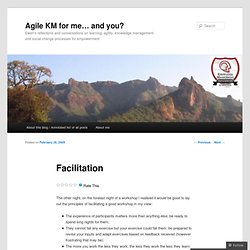

Category Archive. Www.iaf-world.org/Libraries/Certification_documents/Competencies.sflb.ashx. Www.theweave.info/images/TheWeave-V1-High-July2011.pdf. Wasafiri. Innovation Is About Arguing, Not Brainstorming. Here's How To Argue Productively. Turns out that brainstorming--that go-to approach to generating new ideas since the 1940s--isn’t the golden ticket to innovation after all. Both Jonah Lehrer, in a recent article in The New Yorker , and Susan Cain, in her new book Quiet , have asserted as much. Science shows that brainstorms can activate a neurological fear of rejection and that groups are not necessarily more creative than individuals. Brainstorming can actually be detrimental to good ideas.
But the idea behind brainstorming is right. To innovate, we need environments that support imaginative thinking, where we can go through many crazy, tangential, and even bad ideas to come up with good ones. So if not from brainstorming, where do good ideas come from? At Continuum, we use deliberative discourse--or what we fondly call “Argue. So we argue. Wicked Problems: Problems Worth Solving. Cynefin - Recognising and Responding to Complexity. Companies often deal with "wicked problems" which are intractable, often because technical, cultural and managerial opinion is divided.

Making decisions will usually be done in a climate where it cannot be assumed that everyone shares the same values or agrees on their priorities. Imposing a solution where there is no clear and overpowering rationale for it, can generate open refusal to implement it or, at best, grudging compliance. One of the effective ways we have found to approach such problems is to introduce the idea of "sense-making in complexity".
(This approach was developed by Dave Snowden of Cognitive Edge. *) Snowden suggests that complex situations require "emergent decision-making". This implies that decision-making takes place within a "deliberative" environment where participants have sufficient time to re-visit questions as their understanding develops. Each of the four main Cynefin domains is characterised in terms of. The ills of poor event design and facilitation. Since there will be a lot of event facilitation for me to do at ILRI, it is likely that I blog more about it in the coming months.

It makes sense after all, since productive conversations (and learning) are central to my understanding of knowledge management, and well-designed events generate truly productive conversations. Badly designed ones, on the other hand, take us as hostages and they are still all too frequent. What too many events lead to... (credits: SD on FlickR) Rethinking facilitation and engagement. The chemistry of magical facilitation (1) – mind the BOSSY HERALD. I had mentioned that I would sooner or later set my blogging foot again on facilitation island and would seek the island’s treasure trove to trace the original chemistry that makes magical facilitation happen.

Well, I guess I’ve just landed on the island and am now on my way to find the trove. Facilitation magic takes the power of the collective to the next level (Photo credits: mello.luiz/FlickR) This journey will take four steps: Mapping the big picture to understand the wide angle and political side of the event you are designing or facilitating – i.e. the subject of this very post;Tracking the details of that wide angle, to ensure your take on that wide angle and politics is viable and operational;Zooming in on appropriate facilitation methods to go functional and finally…Diving in dynamics, at the heart of the workshop, to inject the relational and emotional.
It’s the chemical combination of these four elements that makes your facilitation magical. 1. Big picture. Related blog posts: Facilitation. The other night, on the forelast night of a workshop I realised it would be good to lay out the principles of facilitating a good workshop in my view: The experience of participants matters more than anything else; be ready to spend long nights for them;They cannot fail any exercise but your exercise could fail them: be prepared to revise your inputs and adapt exercises based on feedback received (however frustrating that may be);The more you work the less they work; the less they work the less they learn: Don’t jam their programme with all the knowledge you’d like to share with them and think about more exercises for them to do; Facilitating is inviting and assisting others to bring the best of themselvesSpend more time for them to peer review each other!

There’s never enough time to review peer work! Use as many examples as you can! You will never come up with too many practical examples and this indicates that you actually have first hand experience with it! Top 25 signs that a workshop isn’t working. Should a Facilitator be Independant or act as a Consultant? Here are my views. I'd be interetested in yours. The chemistry of magical facilitation (2) – Put the bossy herald to play for you. Facilitation is the art of seamlessly inviting all contributions to collective sense-making.

As such it is an essential element of knowledge sharing, knowledge management and social learning. So, in the previous chapter of this series, we’ve looked at the big picture of facilitation, how to handle the BOSSY HERALD, particularly in its bossy part. Let’s assume we’re there, we’ve dealt with the politics of the event. Now comes the moment to apply the design in practice i.e. to focus on the HERALD (part) in detail, and to put it to play for you. 10 principles of innovation. Harmony v.s stimulation - ideation - journal paper. FACTORS THAT ENHANCE AND INHIBIT CREATIVITY IN BRAINSTORMING GROUPS - journal paper.